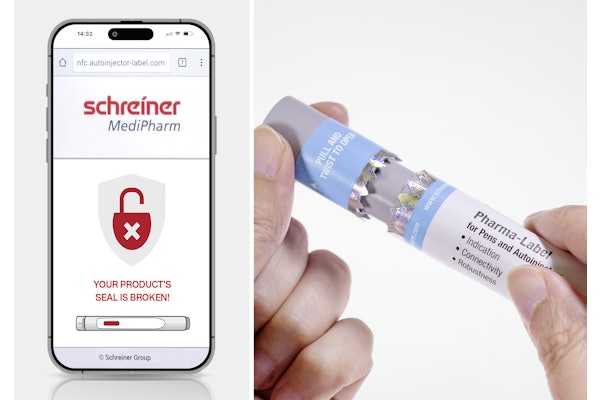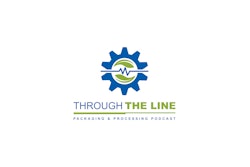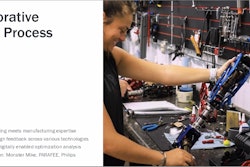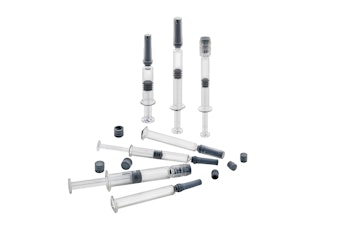
All of us in packaging are aware that the learning never stops. Whether you're new to packaging or a hardened veteran, continuing education programs help you expand your knowledge about the industry.
Traditionally, these programs have been delivered as in-person events, and for many in the industry, onsite classroom continues to work well. But training via the Internet, referred to by some as “e-learning” or “distance learning,” increasingly is becoming an attractive option in its own right. One example is IoPP's recently introduced online version of its core Fundamentals of Packaging Technology course. Additional online packaging classes from other sources are known to be in development. So we can expect to see more online educational options, which also include webinars and video shorts, in general in the near future.
Packaging professionals are dictating the need to add online educational capabilities for two main reasons. First, packaging has gone global. Second, we have become a mobile-communications society, expecting educational programming to be available anytime and from anywhere.
Let's talk about the globalization first. Packaging teams have become decentralized. That reality makes it essential but difficult for a multinational consumer products company's packaging team in China or Germany to share with its U.S. counterparts the same understanding of general packaging technologies that are critical to overall team success. Though exceptions exist, many global companies can't justify the time and expense of sending members of their packaging teams on intercontinental flights for a few days or a week's worth of traditional classroom training. Yet, all team members need to be working from a common baseline of knowledge. Online education is the solution.
And then there's the mobility thing. More of us are learning in small chunks, as we go, when and where it's convenient. Increasingly, many of us are finding that the most attractive learning opportunities are those that allow us to learn 15 or 30 minutes at a time, whether it's at night, away from interruptions at work and after the kids are put to bed, or perhaps for an hour over lunch. The logical way to feed this growing demand for “at my own pace” learning is through flexible online education, in which many natural breaks can be inserted into training programs. If a student needs to pause during an online lesson, they can pick up where they left off at another time.
Younger people, who are the next generation of leaders in packaging, are experienced and comfortable with learning online. They expect to be able to continue learning that way. A recent Sloan Foundation survey of online learning supports that point: more than 30% of college students have enrolled in one or more e-learning courses while completing their education, and the numbers are growing.
It's also logical to assume that mobile devices will eventually play a much bigger role in online education once challenges such as compatibility issues are worked out to enable the widespread use of these devices as additional training tools. At that point, the floodgates could open for mobile devices in the realm of online education. Already, a Brandon Hall research study finds, 28% of smartphone users rely on mobile device as their primary way of engaging the Internet.
There is additional rationale for an expanded online educational environment. Growing numbers of people are joining packaging teams from other cross-functional teams and disciplines. Often, they lack formal packaging experience. Distance learning options could prove quite attractive to them, especially if the same few modules of content will satisfy each of their needs.
With technology advancing, it is becoming possible to build platforms for open learning. It's not hard to envision us arriving at a point sooner rather than later when we can build an online exchange of ideas between attendees of multiple but interrelated online courses. The idea is that an attendee is buying not only the course, but the platform behind it. No matter which door you enter into the platform, you can have access to everyone in your “class.”
This is not to suggest that traditional in-person packaging learning will disappear. Many people will continue to prefer the benefits of a formal classroom setting: in-the-moment interaction with their instructor and peers, engagement with product samples, and face-to-face networking. But the pluses of convenience and a self-paced environment make the future of e-learning, as another option for packaging education, very promising indeed.
By Jim George, Contributing Editor
Traditionally, these programs have been delivered as in-person events, and for many in the industry, onsite classroom continues to work well. But training via the Internet, referred to by some as “e-learning” or “distance learning,” increasingly is becoming an attractive option in its own right. One example is IoPP's recently introduced online version of its core Fundamentals of Packaging Technology course. Additional online packaging classes from other sources are known to be in development. So we can expect to see more online educational options, which also include webinars and video shorts, in general in the near future.
Packaging professionals are dictating the need to add online educational capabilities for two main reasons. First, packaging has gone global. Second, we have become a mobile-communications society, expecting educational programming to be available anytime and from anywhere.
Let's talk about the globalization first. Packaging teams have become decentralized. That reality makes it essential but difficult for a multinational consumer products company's packaging team in China or Germany to share with its U.S. counterparts the same understanding of general packaging technologies that are critical to overall team success. Though exceptions exist, many global companies can't justify the time and expense of sending members of their packaging teams on intercontinental flights for a few days or a week's worth of traditional classroom training. Yet, all team members need to be working from a common baseline of knowledge. Online education is the solution.
And then there's the mobility thing. More of us are learning in small chunks, as we go, when and where it's convenient. Increasingly, many of us are finding that the most attractive learning opportunities are those that allow us to learn 15 or 30 minutes at a time, whether it's at night, away from interruptions at work and after the kids are put to bed, or perhaps for an hour over lunch. The logical way to feed this growing demand for “at my own pace” learning is through flexible online education, in which many natural breaks can be inserted into training programs. If a student needs to pause during an online lesson, they can pick up where they left off at another time.
Younger people, who are the next generation of leaders in packaging, are experienced and comfortable with learning online. They expect to be able to continue learning that way. A recent Sloan Foundation survey of online learning supports that point: more than 30% of college students have enrolled in one or more e-learning courses while completing their education, and the numbers are growing.
It's also logical to assume that mobile devices will eventually play a much bigger role in online education once challenges such as compatibility issues are worked out to enable the widespread use of these devices as additional training tools. At that point, the floodgates could open for mobile devices in the realm of online education. Already, a Brandon Hall research study finds, 28% of smartphone users rely on mobile device as their primary way of engaging the Internet.
There is additional rationale for an expanded online educational environment. Growing numbers of people are joining packaging teams from other cross-functional teams and disciplines. Often, they lack formal packaging experience. Distance learning options could prove quite attractive to them, especially if the same few modules of content will satisfy each of their needs.
With technology advancing, it is becoming possible to build platforms for open learning. It's not hard to envision us arriving at a point sooner rather than later when we can build an online exchange of ideas between attendees of multiple but interrelated online courses. The idea is that an attendee is buying not only the course, but the platform behind it. No matter which door you enter into the platform, you can have access to everyone in your “class.”
This is not to suggest that traditional in-person packaging learning will disappear. Many people will continue to prefer the benefits of a formal classroom setting: in-the-moment interaction with their instructor and peers, engagement with product samples, and face-to-face networking. But the pluses of convenience and a self-paced environment make the future of e-learning, as another option for packaging education, very promising indeed.
By Jim George, Contributing Editor





















